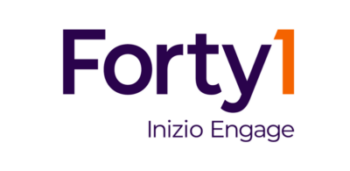The Business of Motivation
Motivation at work is critical
It’s the engine of behavior and decision making. Put simply, it explains why we do what we do.
In increasingly complex and fast-moving environments, organizations are increasingly dependent on those who work for them being agile, collaborative, innovative, and committed. Motivation is key for these outcomes, and we believe, within grasp for all organizations. We hope you’re motivated to read on.
Motivation is more complex than we might think
Our motivation to go to work is more sophisticated and varied than we think. Research shows our motivation to engage in tasks or actions is multifaceted, with many different sources or forms of motivation. These different forms of motivation divide into two broad categories: Intrinsic Motivation and Extrinsic Motivation. These broad categories can split further into social, financial, enjoyment, meaning, and identity.
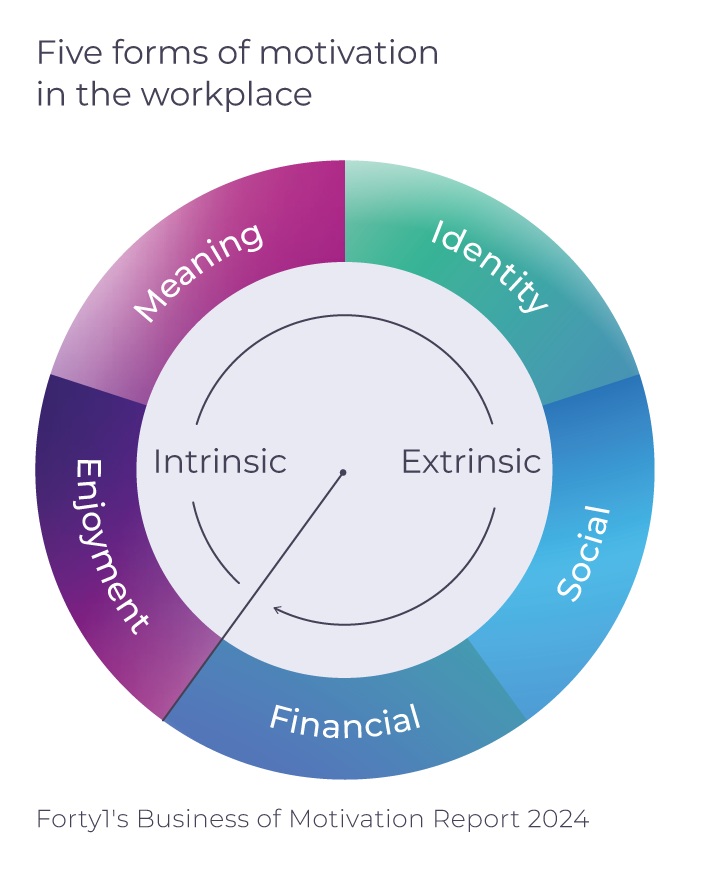
Motivation Matters
To get a better view of the importance and impact of motivation at work, we focus on six specific business outcomes. When motivation is high, these outcomes all improve.
-
Commitment
Our willingness to work harder in our role to help the organization.
-
Churn
Our likelihood to think about leaving the organization.
-
Happiness
Our likelihood to feel happy at work.
-
Stress
Our likelihood to feel stressed at work.
-
Team Belief
Our belief in our team to succeed and meet its targets.
-
Contribution
Our willingness to take on additional tasks that are not part of our defined role.
What motivates employees most isn’t money
Whilst many forms of motivation drive employees, consistent patterns in the forms of motivation dominate the workplace, both in the UK and US. Our data revealed that employees are most strongly motivated by the need to protect their self-esteem and feel good about themselves in their professional role (Identity Motivation). As such, we see that professional roles continue to be an important and highly influential part of identity.
Contrary to expectations, our data revealed that motivation from work enjoyment or financial benefits had the least influence on our drive to work in 2024.

Balance—inside and out—is everything
Our data suggest that organizations will enjoy more positive outcomes when levels of intrinsic and extrinsic forms of motivation are both high and in balance.
Motivation Archetypes
Understanding the type and level of motivation enables us to identify four employee motivation archetypes within organizations.
-
The Unsustainables
Low intrinsic, high extrinsic motivation.While it can yield returns in the short term, Extrinsic Motivation on its own is unsustainable, placing employees at the risk of burnout, and the business at risk of transgressions such as compliance breaches

-
The Thrivers
High intrinsic, high extrinsic motivation.When both types of motivation are high and in balance, we should be enjoying the work and recognising its benefits, whilst at the same time clearly responding to—and anticipating—the needs of the organization and its potentially shifting requirements.
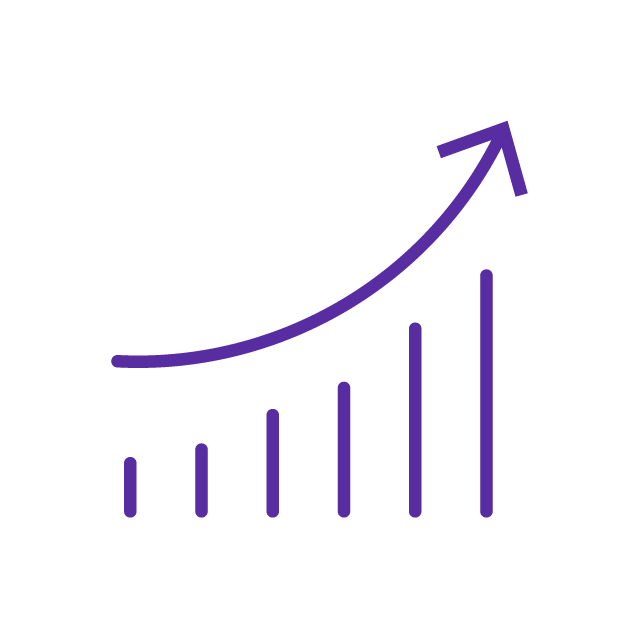
-
The Castaways
Low intrinsic, low extrinsic motivation.Those who are low in both Intrinsic and Extrinsic Motivation receive no meaning or enjoyment from their work. They neither value what the role says about them and what others think of them, nor appreciate the financial rewards they receive in return.

-
The Idealists
High intrinsic, low extrinsic motivation.At the most extreme level, employees who are high solely in Intrinsic Motivation may well simply up and leave the organization the moment their role and working conditions fail to provide them with the enjoyment and meaning they’ve become used to.

The Motivation Matrix
To visualize our motivation archetypes—both in terms of their make-up and potential contribution to the organization—we’ve created The Motivation Matrix.
With Castaways located bottom left, we can see the importance of trying to migrate as many employees as we can towards the top right “magic quadrant” of Thrivers.
Being able to visualize where employees currently sit, in terms of motivation balance and level, is an important first step in developing a strategy for better motivation, building an organization in which employees are Thrivers.
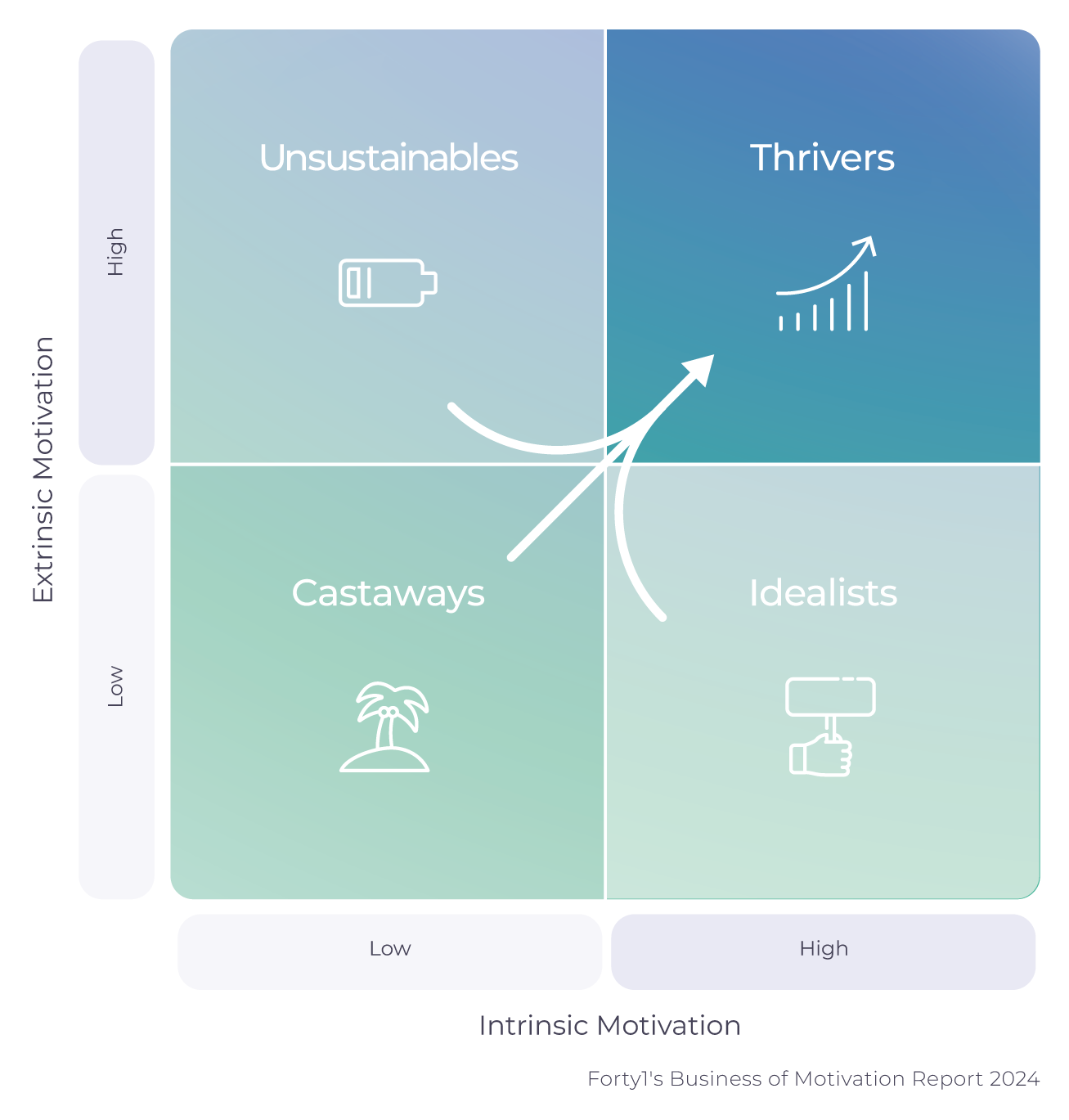
When we map our data on the Motivation Matrix:
We see less than 50% of employees across the US and UK are Thrivers. In other words, less than half of full-time employees are effectively motivated at work to deliver personal and organizational benefits in the long-term. Across all employees, we also see that 1 in 5 are Castaways—recording low levels of both Intrinsic and Extrinsic Motivation.
We believe strongly that these percentages should make all organizations pause for thought; less than 50% of full-time employees in our study (across the UK and US) have high, healthy, and sustainable levels of motivation at work.
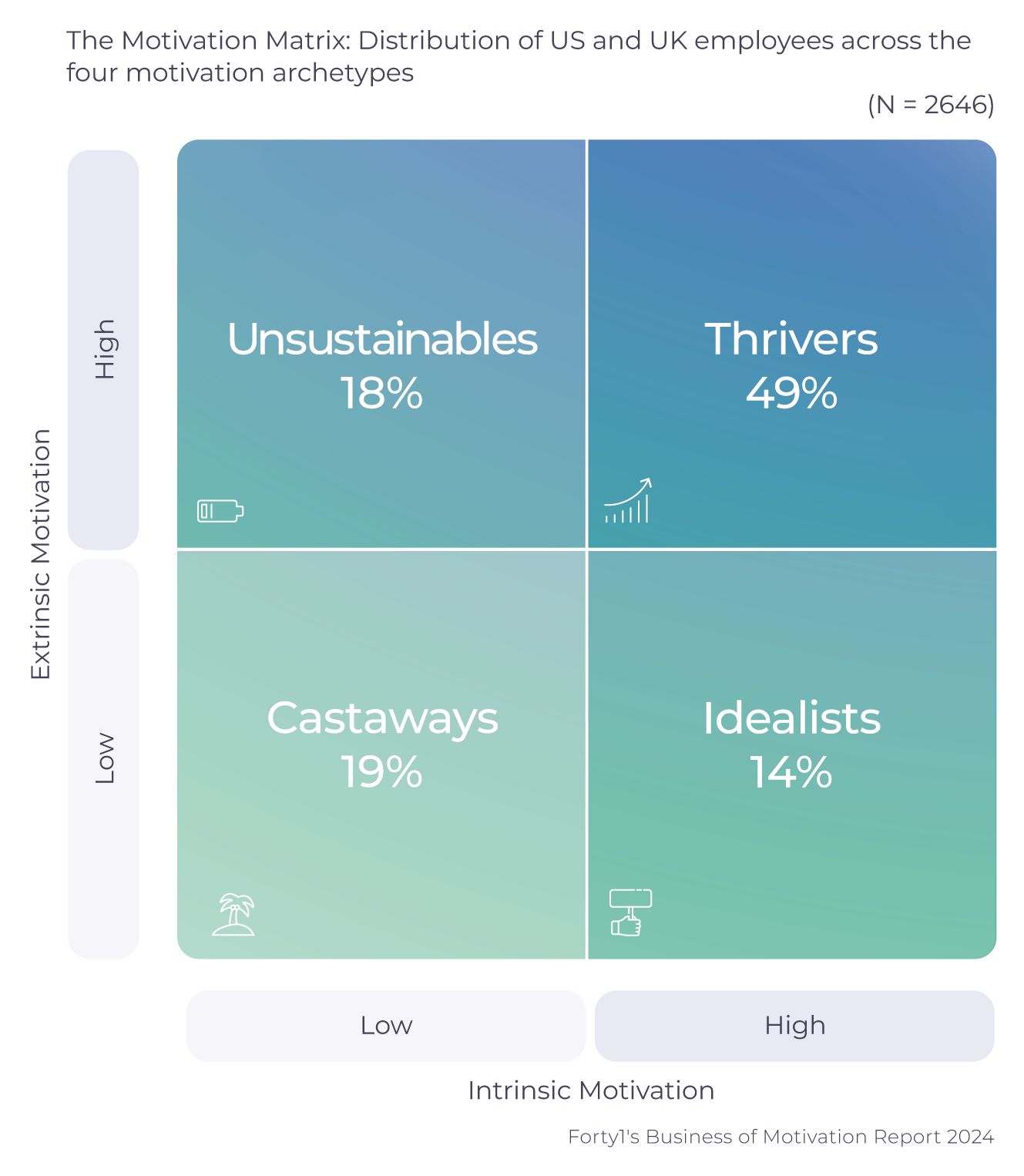
The Motivation Mapper
If you’re curious about how motivated your audience is, our Motivation Mapper can help you measure and understand motivation across your workforce, providing actionable insights to drive engagement and performance.
Foundations and Levers of motivation
Whilst there is no one-size-fits all approach to build motivation within an organization, our data support the argument that satisfying three basic human needs (autonomy, mastery and relatedness) provides an effective route to increasing motivation in the workplace. We call these the Motivation Foundations.
In addition, all organizations have at their disposal a range of Motivation Levers to establish and bolster the foundations for motivation across the employee experience, and, in turn, drive positive organizational outcomes:
Design a bespoke strategy
In order to build motivation effectively, leaders need to create a tailored motivation strategy. This involves understanding the various forms of motivation in the workplace, acknowledging the foundations most relevant to them, and identifying the most effective Motivation Levers to use.
Whilst a strategy to strengthen and balance motivation will be as unique as the organization in question, the concepts of Motivation Foundations and Levers—and their support from our data—provide an organization with the key components to build motivation and harvest its long-term benefits.
Download the full report
or get in touch with us to find out how Forty1 can help your organization.
Our Thinking.
Explore our original thinking, articles and reports on The Business of Motivation.
